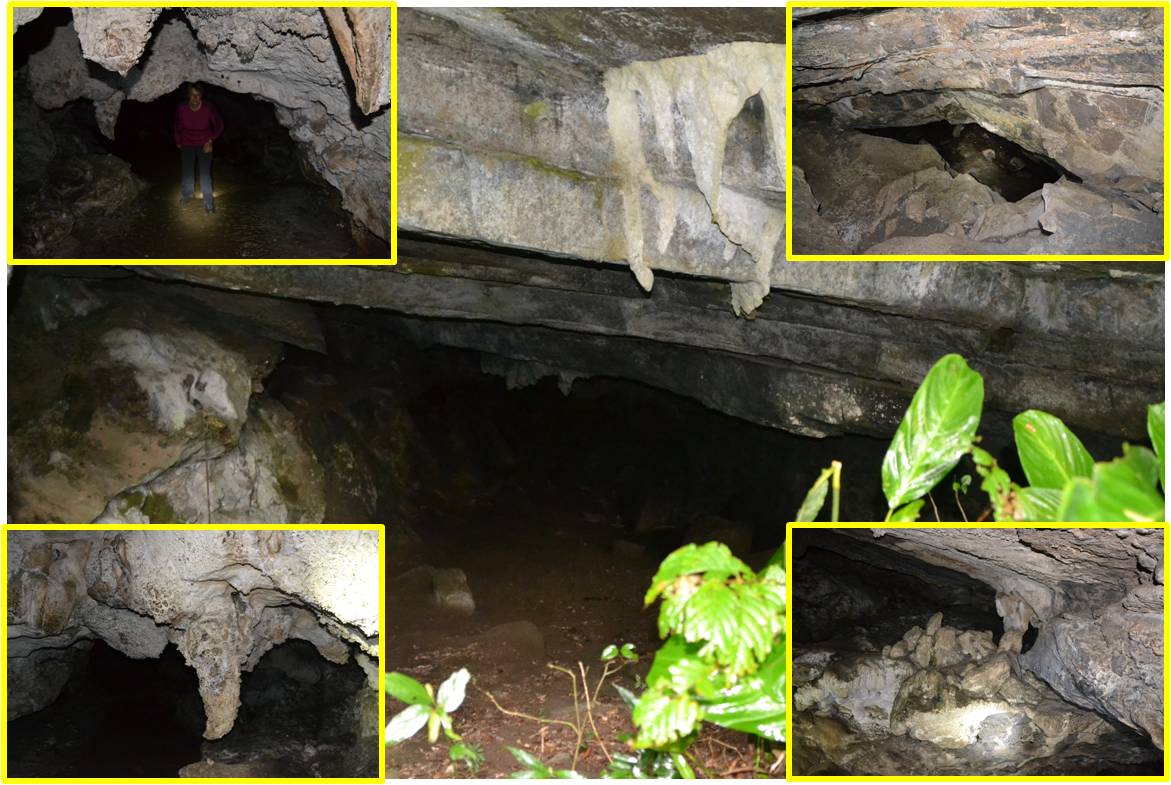

Calcite na Gruta do Fogo
A Gruta do Fogo encontra-se cerca de 2 km da entrada do Parque Estadual Intervales. E tem cerca de 130 metros de extensão. Dentro corre um pequeno córrego. O acesso pode ser feito através de degraus com uma corda de segurança. Dentro se encontra um grande salão e podendo ir adiante para outros salões ao lado. Portanto calçados adequados são necessário aqui. Você precisará até mesmo de lanternas e de monitor. Derntro da caverna nós podemos encontrar uma estrutura rochosa, qual é parecido parte de uma barbatana. Está fixado no teto no meio do salão. Isto é a calcita (ver Spoiler).
Petrografia
Calcita é um mineral que ocorre com muita frequência a partir da classe mineral de carbonatos.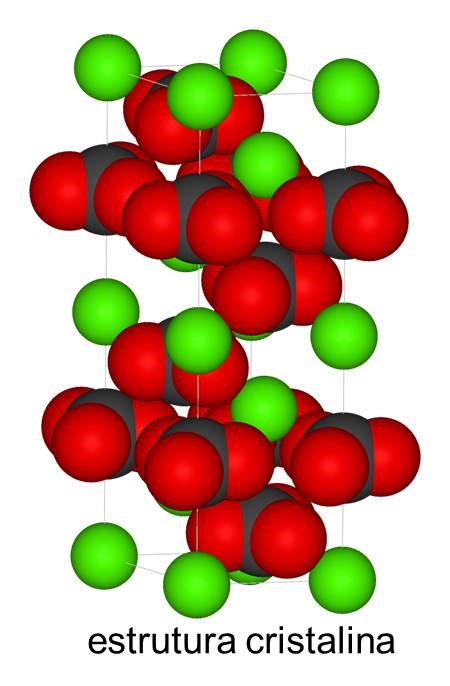 Ela cristaliza em sistema de cristais trigonais com a composição química Ca [CO3] e formas cristalinas e diferentes estados desenvolvidos que são incolor ou a partir de branco leitoso ao cinza, com impurezas também pode ser amarelo, rosa, vermelho, azul, pode ser de cor verde, marrom ou preto. Do ponto de vista Quimico, a calcite é carbonato de calcio, semelhante carbonato de cálcio da aragonita, por causa do sal do ácido carbónico. Comparado com outros minerais calcite é pouco resistente às intempéries. É muito mais mais macio do que o quartzo ou feldspato, e a sua solubilidade em água fria é boa. Vestígios de intemperismo são visíveis em artefatos humanos da antiguidade. Em equipamentos de água quente pode se acumular com baixa expansão de energia.
Ela cristaliza em sistema de cristais trigonais com a composição química Ca [CO3] e formas cristalinas e diferentes estados desenvolvidos que são incolor ou a partir de branco leitoso ao cinza, com impurezas também pode ser amarelo, rosa, vermelho, azul, pode ser de cor verde, marrom ou preto. Do ponto de vista Quimico, a calcite é carbonato de calcio, semelhante carbonato de cálcio da aragonita, por causa do sal do ácido carbónico. Comparado com outros minerais calcite é pouco resistente às intempéries. É muito mais mais macio do que o quartzo ou feldspato, e a sua solubilidade em água fria é boa. Vestígios de intemperismo são visíveis em artefatos humanos da antiguidade. Em equipamentos de água quente pode se acumular com baixa expansão de energia. 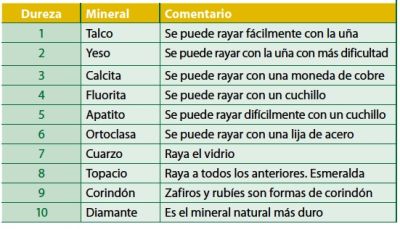 Nas caldeiras de vapor e outras embarcações, nas quais a água dura (água com grande concentração mineral) é aquecida, é formando desta maneira escamas. Calcita pode ser tanto massissa, granular, fibrosa ou cristalina e aparecem em ultimo caso, como o mais rico de todos os minerais. É uma formação minera rochosa, uma das mais comum da crosta terrestre e ocorre em rochas ígneas, como por exemplo em carbonatites, em rochas metamórficas (mármore) ou rochas sedimentares como calcário. Ocorre sozinho ou com outros minerais associada às transições, mas também surge na superfície. Calcita dissolve bem em água ácidas e é, portanto, facilmente dissolvido da rocha calcário, dessa forma surge os sistemas de cavernas. Os depósitos de calcita dissolvidos surgem em outro lugar novamente. Com uma dureza na escala de Mohs de 3, calcita pertence aos minerais suaves, tendo como Referência 10 (diamante). (Friedrich Mohs).
Nas caldeiras de vapor e outras embarcações, nas quais a água dura (água com grande concentração mineral) é aquecida, é formando desta maneira escamas. Calcita pode ser tanto massissa, granular, fibrosa ou cristalina e aparecem em ultimo caso, como o mais rico de todos os minerais. É uma formação minera rochosa, uma das mais comum da crosta terrestre e ocorre em rochas ígneas, como por exemplo em carbonatites, em rochas metamórficas (mármore) ou rochas sedimentares como calcário. Ocorre sozinho ou com outros minerais associada às transições, mas também surge na superfície. Calcita dissolve bem em água ácidas e é, portanto, facilmente dissolvido da rocha calcário, dessa forma surge os sistemas de cavernas. Os depósitos de calcita dissolvidos surgem em outro lugar novamente. Com uma dureza na escala de Mohs de 3, calcita pertence aos minerais suaves, tendo como Referência 10 (diamante). (Friedrich Mohs).
Tal como se utiliza
A calcita contém marmore qual é um material de construção de alta qualidade, além disso calcita no calcário é utilizada na produção de cimentos e fertilizantes, e na fundição de metais. Particularmente os cristais que tem suas propriedades usados na industria Ótica. E tambem é usado em eletrodos básicos para solda manual. Calcita na verdade é muito macia para o processamento comercial como pedra preciosa. Ocasionalmente encontra-se disponivel em cortes macios arredondadas como pedra polida. Colecionadores espertos podem até transformar calcitas em formato de diamantes lapidados.
Eu ficaria muito feliz de uma foto sua no local. Para logar este cache com sucesso, favor responder as perguntas seguintes e enviar nos por messagem. Após isso você poderá logar diretamente. Se tiver algo de errado nós entraremos em contato.
1.) Olhar para o teto de perto. Em que cores da calcite aparece por aqui?
2.) Por que a calcita aquí esta em forma alongada? Explique sua resposta.
3.) É possivel encontrar calcita nas paredes? Seja qual for a forma encontrada aqui? Descreva com suas próprias palavras a sua natureza.

Calcite into the Gruta do Fogo
The cave Gruta do Fogo is about 2 km from the entrance to Intervales National Park. It is about 130 m long. In it a small river flows. Access can be reached via a staircase with a security cable. Inside we first find a large hall and can go further from there to other side halls. Sturdy footwear is however necessary here. You even should have a headlamp. Inside the cave we find a stone structure, which is somewhat reminiscent of a fin. It hangs down the middle of the hall from the ceiling. This, what we see is calcite ( see Spoiler).
Petrography
Calcite a very frequently occurring mineral from the mineral class of carbonates. 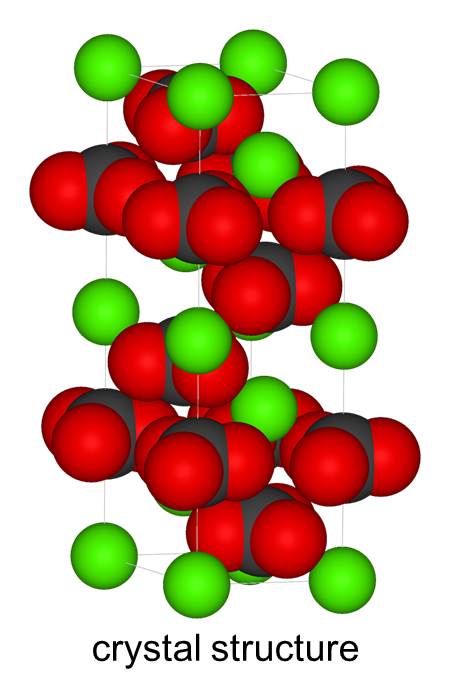 It crystallizes in the trigonal crystal system with the chemical composition Ca[CO3] and developed different crystal or state forms, which can be either colorless or milky white to gray, by impurities also yellow, pink, red, blue, green, brown or black color. Chemical point of view calcite is a calcium carbonate, like the similar aragonite, hence salt of carbonic acid. Compared with other minerals calcite is’nt hardly resistant to weathering. It is much softer than quartz or feldspar, and its solubility in cold water is good. Traces of weathering become noticeable to human artifacts of antiquity. In warm waters organisms therefore can form a housing of calcite with low energy expenditure.
It crystallizes in the trigonal crystal system with the chemical composition Ca[CO3] and developed different crystal or state forms, which can be either colorless or milky white to gray, by impurities also yellow, pink, red, blue, green, brown or black color. Chemical point of view calcite is a calcium carbonate, like the similar aragonite, hence salt of carbonic acid. Compared with other minerals calcite is’nt hardly resistant to weathering. It is much softer than quartz or feldspar, and its solubility in cold water is good. Traces of weathering become noticeable to human artifacts of antiquity. In warm waters organisms therefore can form a housing of calcite with low energy expenditure. 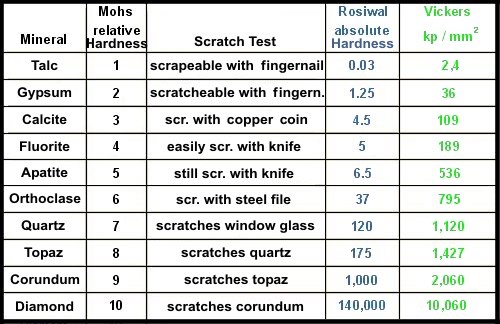 In steam boilers and other vessels, into which hard water is heated, arises in this way scale. Calcite can be both massive and granular, fibrous or crystalline occur and shows in the latter case, the highest form of wealth of all minerals. It is a rock-forming mineral, one of the most common of the earth's crust and occurs both in igneous rocks, for example in carbonatites, in metamorphic rocks (marble) or sedimentary rocks such as limestone. It occurs alone or with other minerals associated in corridors, but also occurs at the surface. Calcite dissolves well in acidic water and is therefore easy leached from limestone. In this way arise cave systems. The dissolved calcite deposits elsewhere again. With a Mohs hardness of 3 Calcite belongs to the soft minerals, serving as a reference to the to 10 (diamond) reaching out to Friedrich Mohs.
In steam boilers and other vessels, into which hard water is heated, arises in this way scale. Calcite can be both massive and granular, fibrous or crystalline occur and shows in the latter case, the highest form of wealth of all minerals. It is a rock-forming mineral, one of the most common of the earth's crust and occurs both in igneous rocks, for example in carbonatites, in metamorphic rocks (marble) or sedimentary rocks such as limestone. It occurs alone or with other minerals associated in corridors, but also occurs at the surface. Calcite dissolves well in acidic water and is therefore easy leached from limestone. In this way arise cave systems. The dissolved calcite deposits elsewhere again. With a Mohs hardness of 3 Calcite belongs to the soft minerals, serving as a reference to the to 10 (diamond) reaching out to Friedrich Mohs.
How to use
The calcit containing Marble is a high-quality building materials, besides calcite limestone is used in the production of cement and fertilizers, and in the smelting of metal ores. Particularly pure crystals owing to their optical properties for use in the optical industry. It is also used in basic electrodes for manual metal arc welding. Calcite is actually too soft for commercial processing as a gemstone. Occasionally he is yet available in smooth cut as cabochon or tumbled stone. Savvy collectors succeeds beyond to bring also calcite in facet shape.
To log this cache, go to this location and answer the following questions. Then post a photo of you at the location to your log. Of course, if you do not want to appear in the photo, a personal item in the photo is enough proof of your presence. (According to the Earthcache Guidelines, photo-proofing has been required since June 2019.) After that you can give your log directly. If anything is not ok, we will contact you.
1.)Look at the ceiling once closely. In what colors the calcite is revealed here?
2.) Why did the calcite this elongated shape? Explain your answer.
3.) Do you find on the walls also calcite? Whatever form it has here? Describe in your own words its nature.

Calcit in der Gruta do Fogo
Die Höhle Gruta do ist etwa 2 km vom Eingang zum Intervales Nationalpark entfernt. Sie ist etwa 130 m lang. In ihr fließt ein kleiner Fluss. Der Zugang ist über eine angelegte Treppe mit Seilsicherung zu erreichen. Im Innern trifft man zuerst auf eine große Halle und kann von dort in weitere Nebenhallen weitergehen. Festes Schuhwerk ist hier aber notwendig. Auch eine Taschenlampe sollte man dabei haben. Im Innern der Höhle treffen wir auf ein Steingebilde, was ein wenig an eine Flosse erinnert. Es hängt inmitten der Halle von der Decke herab. Es handelt sich hierbei um Calcit.
Petrographie
Calcit ist ein sehr häufig vorkommendes Mineral aus der Mineralklasse der Carbonate. 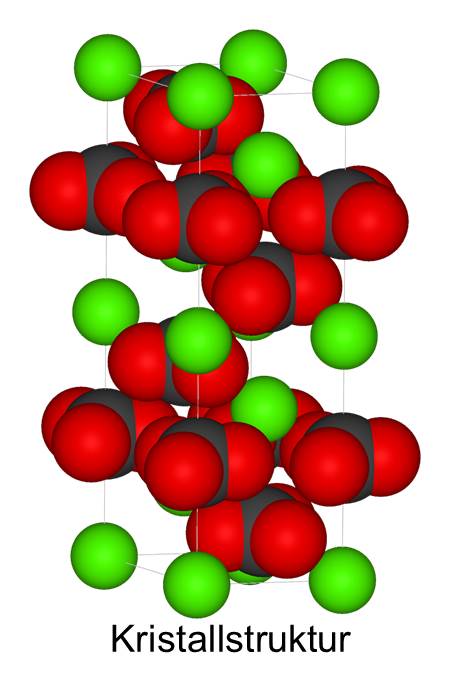 Es kristallisiert im trigonalen Kristallsystem mit der chemischen Zusammensetzung Ca[CO3] und entwickelt verschiedene Kristall- beziehungsweise Zustandsformen, die entweder farblos oder von milchig weißer bis grauer, durch Verunreinigungen auch gelber, rosa, roter, blauer, grüner, brauner oder schwarzer Farbe sein können. Chemisch gesehen ist Calcit, wie der ähnliche Aragonit ein Calciumcarbonat, also ein Calcium-Salz der Kohlensäure. Verglichen mit anderen Mineralen ist Calcit kaum resistent gegenüber der Verwitterung. Er ist viel weicher als Quarz oder Feldspat und seine Löslichkeit in kaltem Wasser ist gut. Spuren der Verwitterung machen sich an menschlichen Artefakten der Antike bemerkbar. Mit steigender Temperatur bildet sich das Calcit leichter. In warmen Gewässern können Lebewesen also mit geringerem Energieaufwand Calcitgehäuse bilden.
Es kristallisiert im trigonalen Kristallsystem mit der chemischen Zusammensetzung Ca[CO3] und entwickelt verschiedene Kristall- beziehungsweise Zustandsformen, die entweder farblos oder von milchig weißer bis grauer, durch Verunreinigungen auch gelber, rosa, roter, blauer, grüner, brauner oder schwarzer Farbe sein können. Chemisch gesehen ist Calcit, wie der ähnliche Aragonit ein Calciumcarbonat, also ein Calcium-Salz der Kohlensäure. Verglichen mit anderen Mineralen ist Calcit kaum resistent gegenüber der Verwitterung. Er ist viel weicher als Quarz oder Feldspat und seine Löslichkeit in kaltem Wasser ist gut. Spuren der Verwitterung machen sich an menschlichen Artefakten der Antike bemerkbar. Mit steigender Temperatur bildet sich das Calcit leichter. In warmen Gewässern können Lebewesen also mit geringerem Energieaufwand Calcitgehäuse bilden. 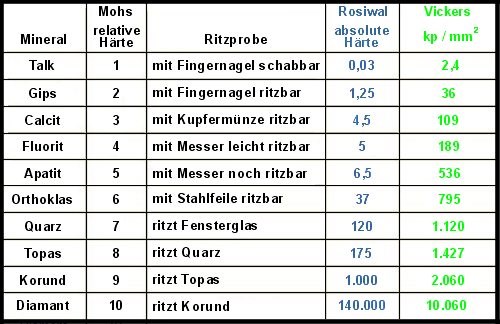 In Dampfkesseln und anderen Gefäßen, in welchen kalkhaltiges Wasser erhitzt wird, entsteht auf diese Weise Kesselstein. Calcit kann sowohl massiv als auch körnig, faserig oder kristallin auftreten und zeigt in letzterem Falle den höchsten Formenreichtum aller Minerale. Es ist als Gestein bildendes Mineral eines der häufigsten der Erdkruste und kommt sowohl in magmatischen Gesteinen, zum Beispiel in Karbonatiten, in metamorphen Gesteinen (Marmor) oder Sedimentgesteinen wie Kalkstein vor. Es tritt alleine oder mit anderen Mineralen vergesellschaftet in Gängen auf, entsteht aber auch an der Erdoberfläche. Calcit löst sich gut in säurehaltigem Wasser und wird dadurch leicht zum Beispiel aus Kalkstein ausgelaugt, wodurch Höhlensysteme entstehen. Der gelöste Calcit lagert sich an anderer Stelle wieder ab. Mit einer Mohshärte von 3 gehört Calcit zu den weichen Mineralen und dient als Bezugsgröße auf der bis 10 (Diamant) reichenden Skala nach Friedrich Mohs.
In Dampfkesseln und anderen Gefäßen, in welchen kalkhaltiges Wasser erhitzt wird, entsteht auf diese Weise Kesselstein. Calcit kann sowohl massiv als auch körnig, faserig oder kristallin auftreten und zeigt in letzterem Falle den höchsten Formenreichtum aller Minerale. Es ist als Gestein bildendes Mineral eines der häufigsten der Erdkruste und kommt sowohl in magmatischen Gesteinen, zum Beispiel in Karbonatiten, in metamorphen Gesteinen (Marmor) oder Sedimentgesteinen wie Kalkstein vor. Es tritt alleine oder mit anderen Mineralen vergesellschaftet in Gängen auf, entsteht aber auch an der Erdoberfläche. Calcit löst sich gut in säurehaltigem Wasser und wird dadurch leicht zum Beispiel aus Kalkstein ausgelaugt, wodurch Höhlensysteme entstehen. Der gelöste Calcit lagert sich an anderer Stelle wieder ab. Mit einer Mohshärte von 3 gehört Calcit zu den weichen Mineralen und dient als Bezugsgröße auf der bis 10 (Diamant) reichenden Skala nach Friedrich Mohs.
Verwendung
Der calcithaltige Marmor ist ein hochwertiges Baumaterial, daneben wird Calcit in Kalkstein zur Produktion von Zement und Kunstdünger und bei der Verhüttung von Metallerzen eingesetzt. Besonders reine Kristalle finden wegen ihrer optischen Eigenschaften Verwendung in der optischen Industrie. Außerdem wird es in basischen Elektroden zum Lichtbogenhandschweißen eingesetzt. Calcit ist für eine kommerzielle Verarbeitung als Schmuckstein eigentlich zu weich. Gelegentlich wird er aber dennoch im Glattschliff als Cabochon oder Trommelstein angeboten. Versierten Sammlern gelingt es darüber hinaus auch, Calcit in Facettenform (Treppenschliff) zu bringen.
Um diesen Cache zu loggen, begib dich zu dieser Location und beantworte nachfolgende Fragen. Anschließend postet zu eurem Log bitte noch ein Foto von euch an der Location. Wenn ihr selbst nicht auf dem Foto erscheinen wollt, reicht natürlich auch ein persönlicher Gegenstand auf dem Foto als Beweis eurer Anwesenheit. (Laut Earthcache Guidelines ist die Forderung eines Fotobeweises seit Juni 2019 wieder erlaubt.)
Danach könnt Ihr sofort loggen. Wenn irgendetwas nicht in Ordnung sein sollte, melde ich mich.
1.) Schaue dir die Decke einmal genau an. In welchen Farben tritt das Calcit hier zutage?
2.) Warum hat das Calcit diese längliche Form? Begründe deine Antwort.
3.) Findest du an den Wänden auch Calcit? Welche Form hat es hier? Beschreibe mit eigenen Worten seine Beschaffenheit.
Quelle:
· http://www.chemie.de
· http://www.geografia.fflch.usp.br/mapas/Atlas_Intervales
· Wikipedia
· Foto by my own
· Graphics: Wikipedia